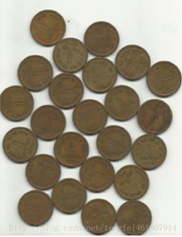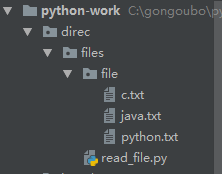python生成tensorflow输入输出的图像格式的方法
TensorFLow能够识别的图像文件,可以通过numpy,使用tf.Variable或者tf.placeholder加载进tensorflow;也可以通过自带函数(tf.read)读取,当图像文件过多时,一般使用pipeline通过队列的方法进行读取。下面我们介绍两种生成tensorflow的图像格式的方法,供给tensorflow的graph的输入与输出。
import cv2
import numpy as np
import h5py
height = 460
width = 345
with h5py.File('make3d_dataset_f460.mat','r') as f:
images = f['images'][:]
image_num = len(images)
data = np.zeros((image_num, height, width, 3), np.uint8)
data = images.transpose((0,3,2,1))
先生成图像文件的路径:ls *.jpg> list.txt
import cv2 import numpy as np image_path = './' list_file = 'list.txt' height = 48 width = 48 image_name_list = [] # read image with open(image_path + list_file) as fid: image_name_list = [x.strip() for x in fid.readlines()] image_num = len(image_name_list) data = np.zeros((image_num, height, width, 3), np.uint8) for idx in range(image_num): img = cv2.imread(image_name_list[idx]) img = cv2.resize(img, (height, width)) data[idx, :, :, :] = img
2 Tensorflow自带函数读取
def get_image(image_path):
"""Reads the jpg image from image_path.
Returns the image as a tf.float32 tensor
Args:
image_path: tf.string tensor
Reuturn:
the decoded jpeg image casted to float32
"""
return tf.image.convert_image_dtype(
tf.image.decode_jpeg(
tf.read_file(image_path), channels=3),
dtype=tf.uint8)
pipeline读取方法
# Example on how to use the tensorflow input pipelines. The explanation can be found here ischlag.github.io.
import tensorflow as tf
import random
from tensorflow.python.framework import ops
from tensorflow.python.framework import dtypes
dataset_path = "/path/to/your/dataset/mnist/"
test_labels_file = "test-labels.csv"
train_labels_file = "train-labels.csv"
test_set_size = 5
IMAGE_HEIGHT = 28
IMAGE_WIDTH = 28
NUM_CHANNELS = 3
BATCH_SIZE = 5
def encode_label(label):
return int(label)
def read_label_file(file):
f = open(file, "r")
filepaths = []
labels = []
for line in f:
filepath, label = line.split(",")
filepaths.append(filepath)
labels.append(encode_label(label))
return filepaths, labels
# reading labels and file path
train_filepaths, train_labels = read_label_file(dataset_path + train_labels_file)
test_filepaths, test_labels = read_label_file(dataset_path + test_labels_file)
# transform relative path into full path
train_filepaths = [ dataset_path + fp for fp in train_filepaths]
test_filepaths = [ dataset_path + fp for fp in test_filepaths]
# for this example we will create or own test partition
all_filepaths = train_filepaths + test_filepaths
all_labels = train_labels + test_labels
all_filepaths = all_filepaths[:20]
all_labels = all_labels[:20]
# convert string into tensors
all_images = ops.convert_to_tensor(all_filepaths, dtype=dtypes.string)
all_labels = ops.convert_to_tensor(all_labels, dtype=dtypes.int32)
# create a partition vector
partitions = [0] * len(all_filepaths)
partitions[:test_set_size] = [1] * test_set_size
random.shuffle(partitions)
# partition our data into a test and train set according to our partition vector
train_images, test_images = tf.dynamic_partition(all_images, partitions, 2)
train_labels, test_labels = tf.dynamic_partition(all_labels, partitions, 2)
# create input queues
train_input_queue = tf.train.slice_input_producer(
[train_images, train_labels],
shuffle=False)
test_input_queue = tf.train.slice_input_producer(
[test_images, test_labels],
shuffle=False)
# process path and string tensor into an image and a label
file_content = tf.read_file(train_input_queue[0])
train_image = tf.image.decode_jpeg(file_content, channels=NUM_CHANNELS)
train_label = train_input_queue[1]
file_content = tf.read_file(test_input_queue[0])
test_image = tf.image.decode_jpeg(file_content, channels=NUM_CHANNELS)
test_label = test_input_queue[1]
# define tensor shape
train_image.set_shape([IMAGE_HEIGHT, IMAGE_WIDTH, NUM_CHANNELS])
test_image.set_shape([IMAGE_HEIGHT, IMAGE_WIDTH, NUM_CHANNELS])
# collect batches of images before processing
train_image_batch, train_label_batch = tf.train.batch(
[train_image, train_label],
batch_size=BATCH_SIZE
#,num_threads=1
)
test_image_batch, test_label_batch = tf.train.batch(
[test_image, test_label],
batch_size=BATCH_SIZE
#,num_threads=1
)
print "input pipeline ready"
with tf.Session() as sess:
# initialize the variables
sess.run(tf.initialize_all_variables())
# initialize the queue threads to start to shovel data
coord = tf.train.Coordinator()
threads = tf.train.start_queue_runners(coord=coord)
print "from the train set:"
for i in range(20):
print sess.run(train_label_batch)
print "from the test set:"
for i in range(10):
print sess.run(test_label_batch)
# stop our queue threads and properly close the session
coord.request_stop()
coord.join(threads)
sess.close()
以上就是本文的全部内容,希望对大家的学习有所帮助,也希望大家多多支持【听图阁-专注于Python设计】。

